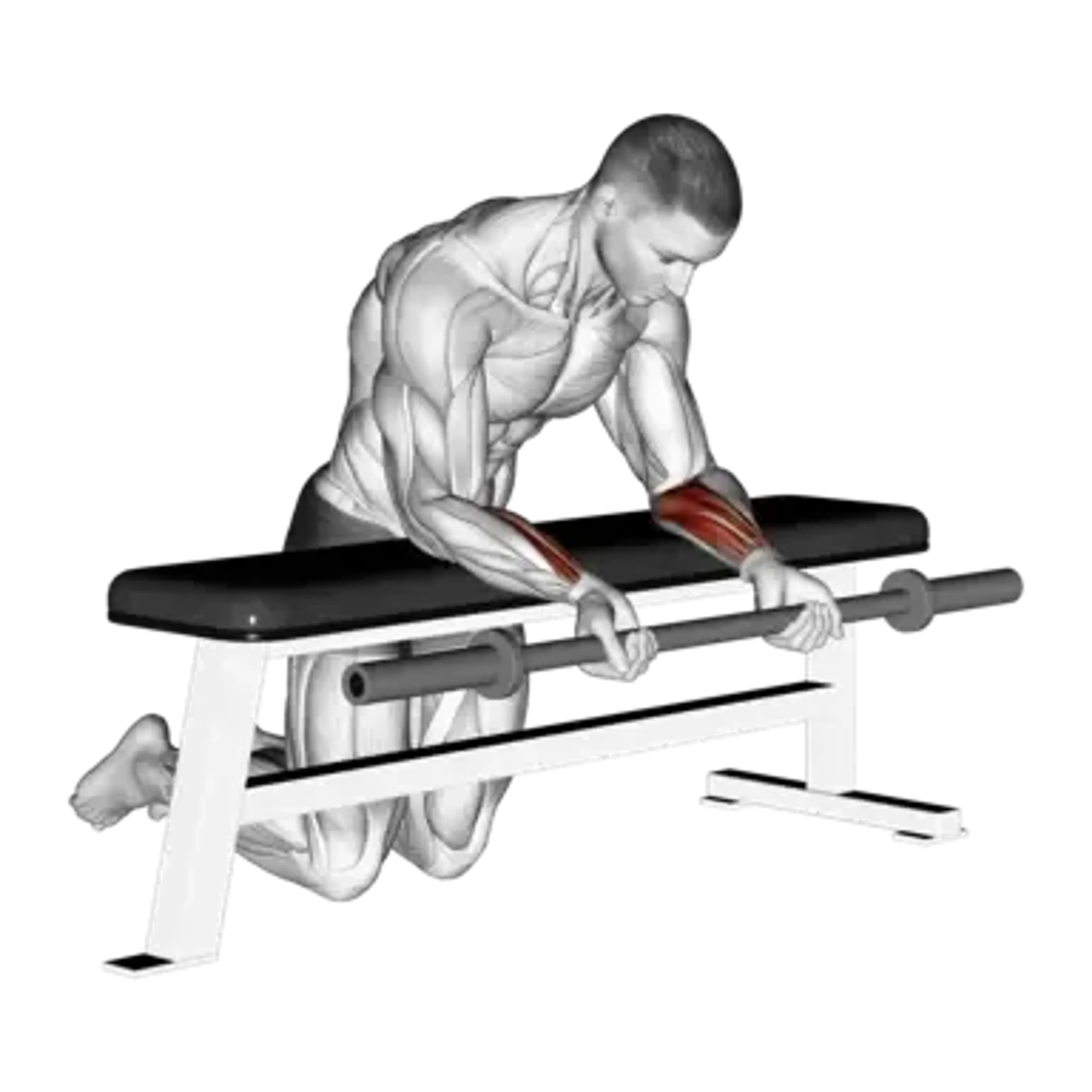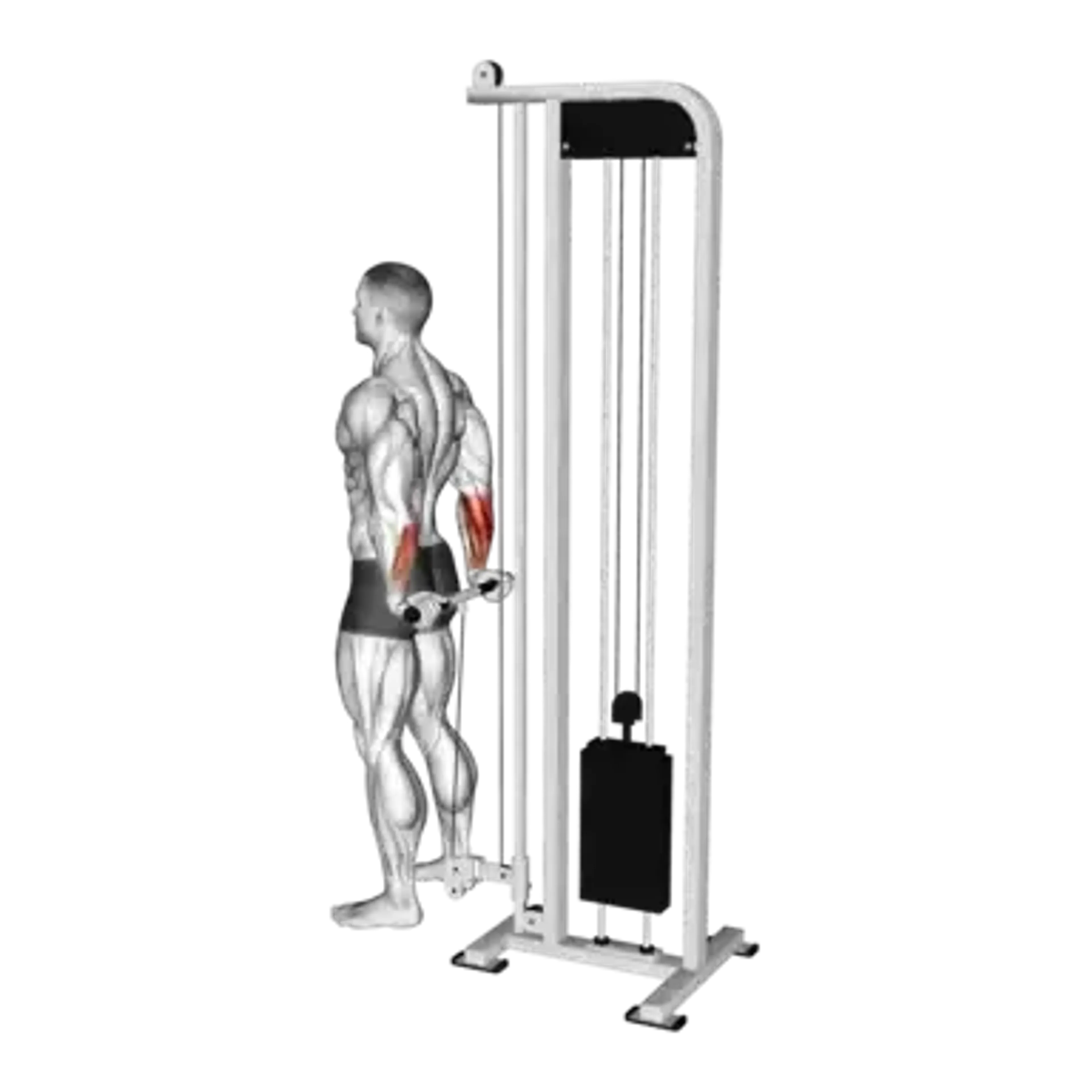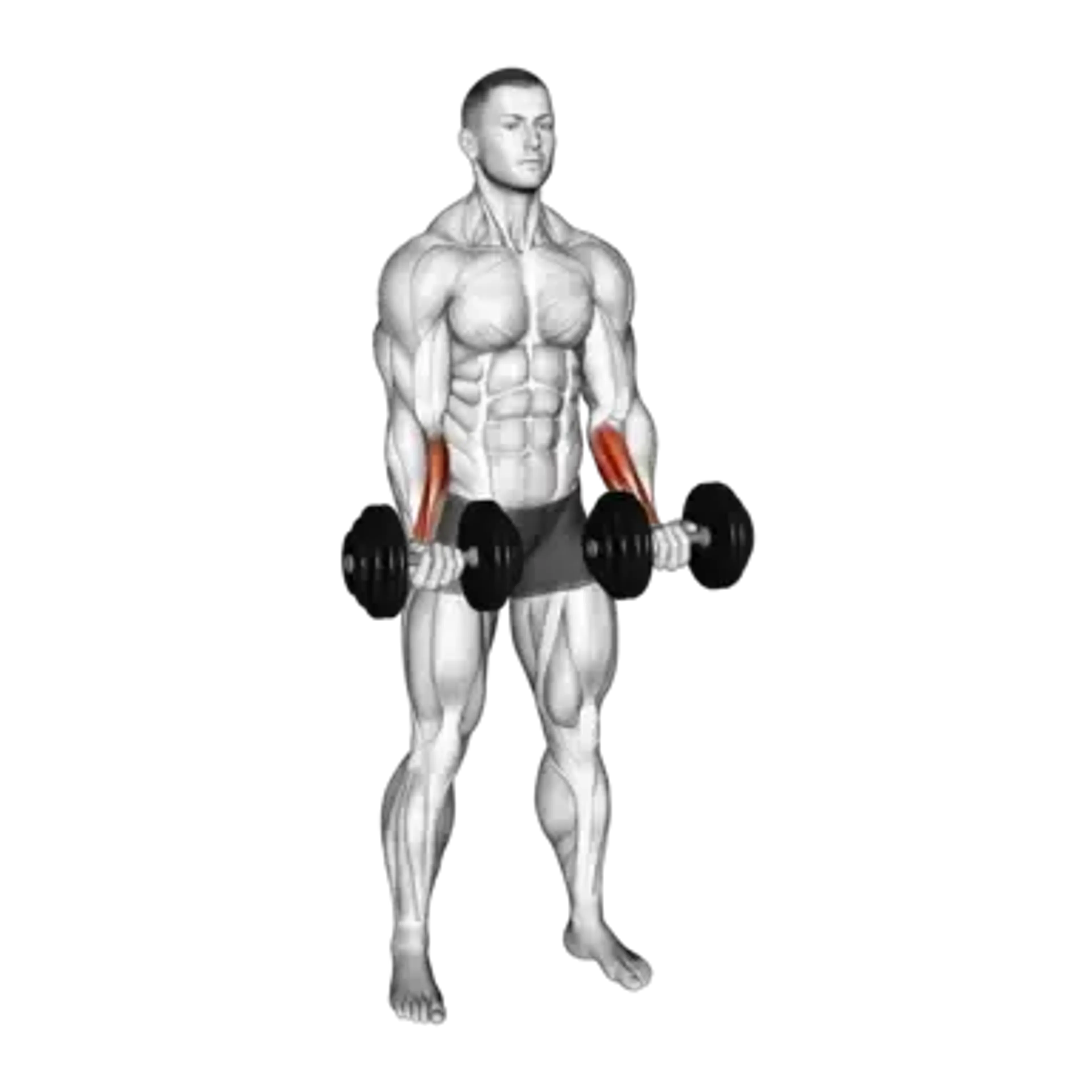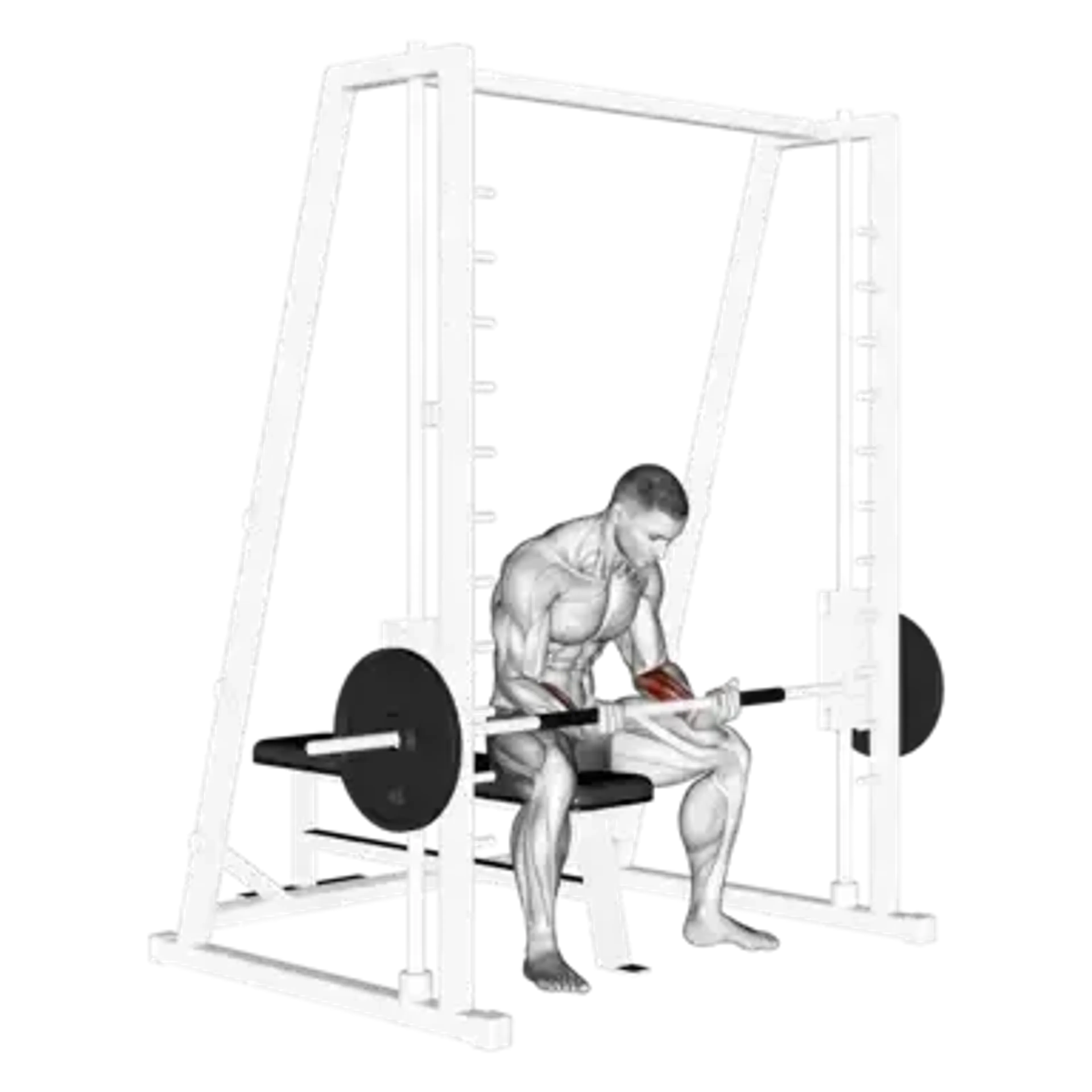Dumbbell Palms-Up Wrist Curl
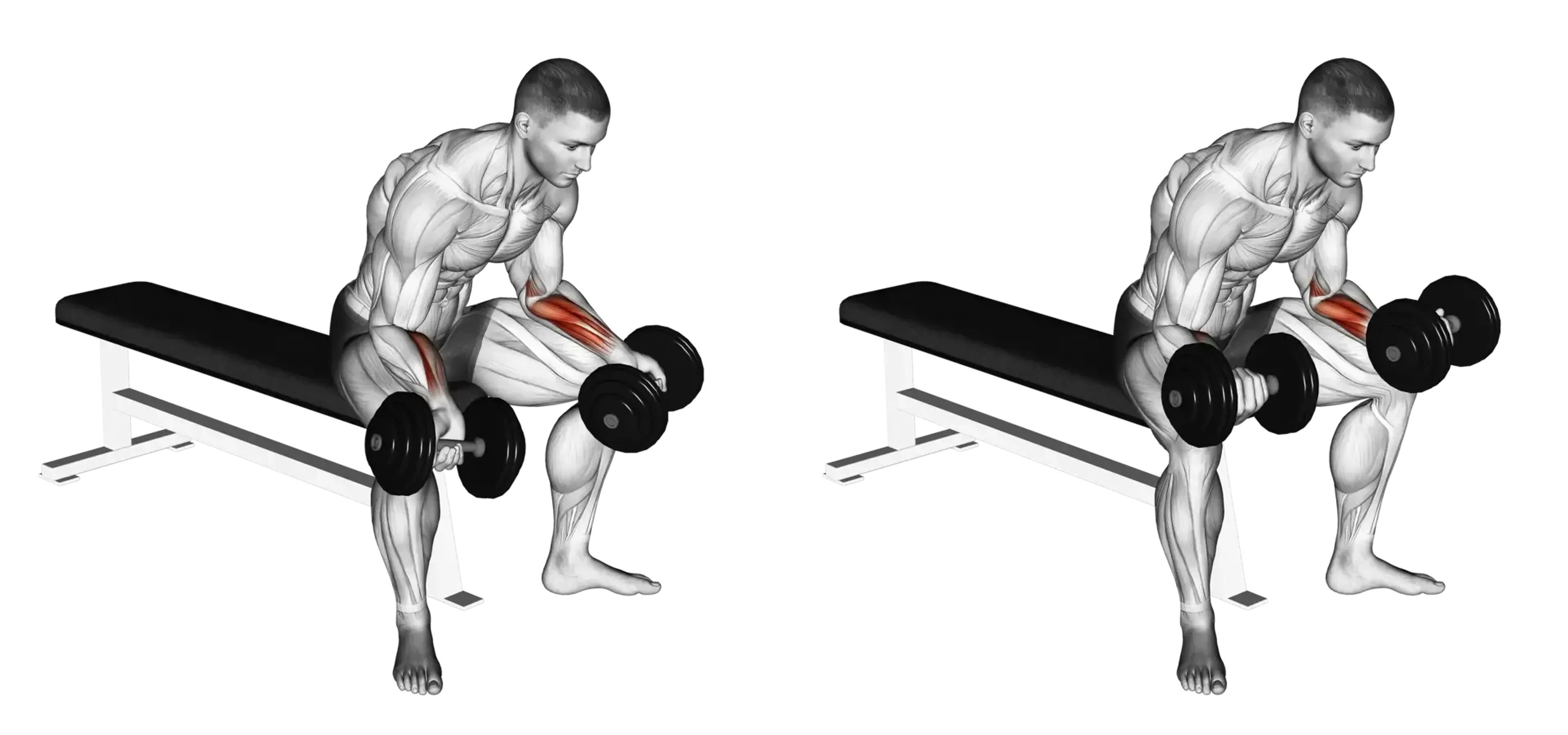
Overview
- Primary Focus:
- Forearms.
- Equipment:
- Dumbbell and bench.
- Difficulty:
- Beginner.
General Information
Dumbbell Palms-Up Wrist Curl is an isolation exercise that primarily targets the wrist flexors and forearm muscles, not the biceps as commonly mistaken. It’s a beginner-friendly movement that helps build grip strength and improve wrist stability. The over-the-bench variation, where your elbows rest on a bench, minimizes unwanted arm movement, ensuring that the wrists handle most of the workload.
This exercise can also be performed with a barbell, which allows you to lift heavier weight and apply even resistance across both wrists. However, using dumbbells offers greater freedom of movement, allowing each wrist to work independently. This can help correct muscle imbalances and improve coordination.
Incorporating palms-up wrist curls into your routine is beneficial for enhancing grip strength and supporting movements like deadlifts, pull-ups, or any activity requiring a strong grip. It’s also a helpful exercise for injury prevention, particularly in sports that place stress on the wrists.
Muscles Worked
- Flexor Carpi Radialis
- Primary
- Flexor Carpi Ulnaris
- High
- Brachioradialis
- Medium
- Extensor Carpi Radialis
- Low
Instructions
- Sit on a bench, holding a dumbbell in each hand with your palms facing up.
- Place your forearms on the bench, letting your wrists extend past the edge, so only your hands can move freely.
- Start with your wrists extended downward, allowing the dumbbells to roll slightly toward your fingers.
- Curl your wrists upward by contracting your forearm muscles, bringing the dumbbells as high as possible.
- Hold the top position for a second, squeezing your forearms, then slowly lower the dumbbells back to the starting position.
- Repeat for the desired number of reps.
Common Mistakes
Injuries
This exercise has a low risk of injury when performed correctly.
Overextending the wrists at the bottom of the movement can strain the tendons. To prevent this, control the weight throughout the motion and avoid letting the dumbbells pull your wrists too far downward.
Using excessive weight can compromise form and lead to strain. It’s best to start with light weights and gradually increase as your strength improves.
Alternative Exercises

Frequently Asked Questions
- Q: Can I use a barbell for this exercise?
Yes, the barbell variation allows you to lift heavier weight and maintain even resistance across both wrists. Dumbbells, however, give each wrist more freedom of movement.
- Q: How often should I train my wrists?
Training your wrists 1-2 times per week is enough for most people, especially when combined with other forearm exercises.
- Q: Should I do this exercise if I have wrist pain?
If you experience wrist pain, stop immediately and consult a professional. Focus on controlled movements and light weights to avoid strain.
Overview
- Primary Focus:
- Forearms.
- Equipment:
- Dumbbell and bench.
- Difficulty:
- Beginner.
